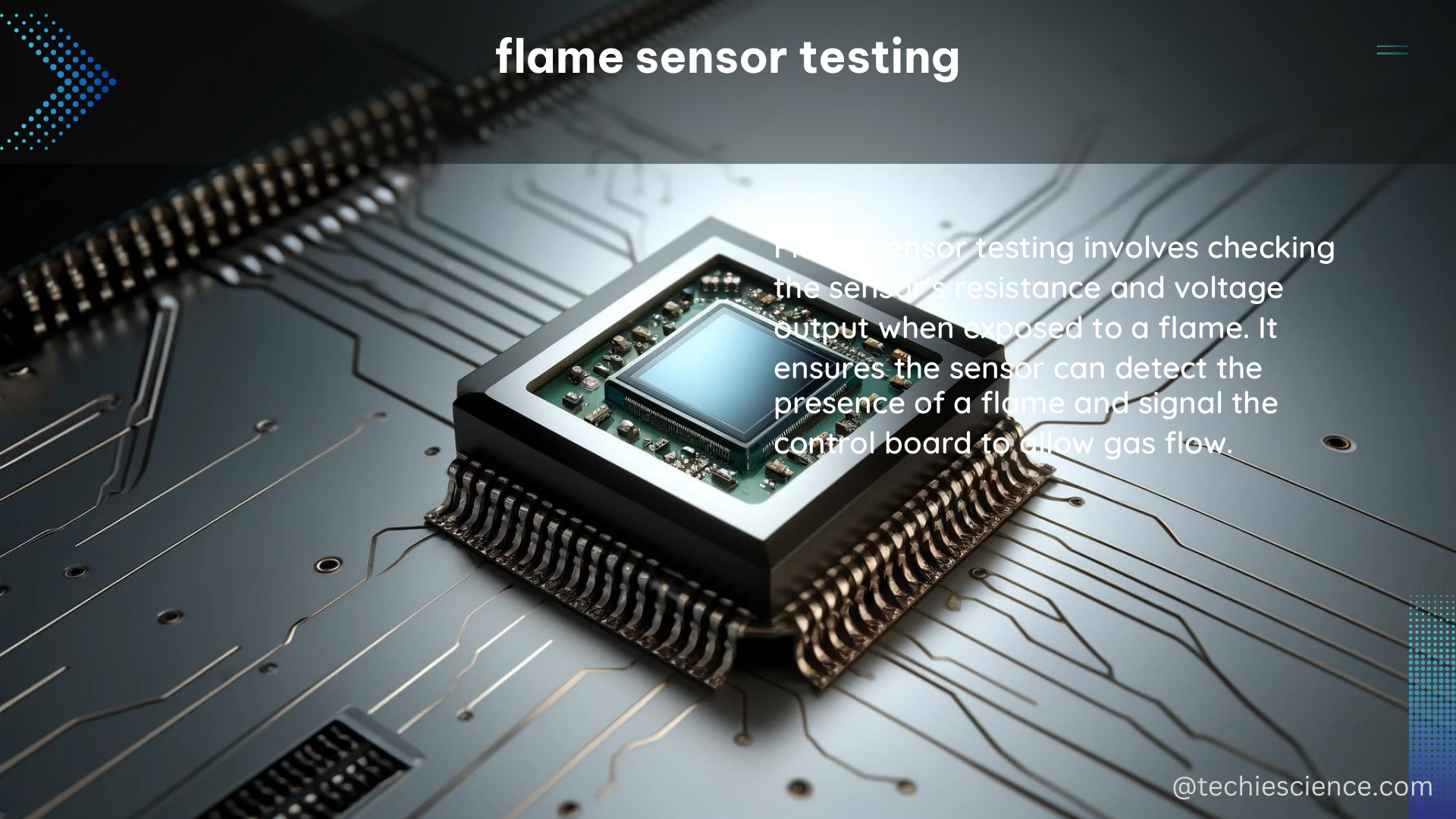Flame sensor testing is a critical process in ensuring the proper functioning and safety of gas detection systems. This comprehensive guide delves into the technical specifications, parameters, and methods involved in quantifying the performance of these essential sensors.
Measuring Flame Temperature
One of the key aspects of flame sensor testing is the measurement of flame temperature. Honeywell’s Gas Detection guide explains that flame temperature sensors, such as thermocouples or optical pyrometers, can be used to measure the temperature of the flame. These sensors convert the heat from the flame into an electrical signal, which can then be calibrated to provide a direct reading of the flame temperature.
The accuracy of these temperature sensors can be affected by several factors:
- Emissivity of the Flame: The emissivity of the flame, which is a measure of its ability to emit thermal radiation, can impact the sensor’s readings.
- Viewing Angle: The angle at which the sensor is positioned relative to the flame can influence the temperature measurements.
- Distance between Sensor and Flame: The distance between the sensor and the flame can also affect the accuracy of the temperature readings.
To ensure reliable temperature measurements, it is essential to consider these factors and calibrate the sensors accordingly.
Measuring Response Time

Another crucial parameter in flame sensor testing is the response time. The response time is the time it takes for the sensor to detect a change in the flame status and provide a corresponding output signal. This parameter can be affected by various factors, including:
- Sensor Design: The specific design and construction of the flame sensor can influence its response time.
- Flame Size and Intensity: The size and intensity of the flame can impact the sensor’s ability to detect changes in the flame status.
- Distance between Sensor and Flame: The distance between the sensor and the flame can also affect the response time.
To measure the response time, a common method is to use a step change in the flame status, such as switching the flame on or off, and recording the time it takes for the sensor to respond.
Assessing Sensitivity and Selectivity
Flame sensor testing also involves the measurement of the sensor’s sensitivity and selectivity. Sensitivity refers to the ability of the sensor to detect small changes in the flame status, while selectivity refers to the sensor’s ability to discriminate between different types of flames or gases.
The sensitivity and selectivity of the sensor can be influenced by:
- Sensor Design: The specific design and construction of the flame sensor can impact its sensitivity and selectivity.
- Flame Composition and Intensity: The composition and intensity of the flame can affect the sensor’s ability to detect and differentiate between different flame characteristics.
- Presence of Interfering Substances: The presence of other substances in the environment, such as dust or other gases, can interfere with the sensor’s ability to accurately detect the flame.
To assess the sensitivity and selectivity of the flame sensor, specialized testing methods and equipment may be required, such as the use of calibrated gas mixtures or controlled flame sources.
Calibration and Maintenance Procedures
To ensure the accuracy and reliability of flame sensor testing, it is essential to follow proper calibration and maintenance procedures. The guidelines for sampling, as recommended by the North Carolina Department of Environmental Quality, suggest using approved analytical methods and certified laboratories, as well as monitoring the laboratory’s performance against specific contract requirements.
Regular calibration and maintenance tasks, such as:
- Cleaning the Sensor: Removing any accumulated dust or debris from the sensor’s surface can help maintain its performance.
- Replacing Batteries: Ensuring the sensor’s power source is in good condition can prevent issues related to power supply.
- Verifying Sensor Functionality: Regularly testing the sensor’s response to known flame conditions can help identify any potential issues.
By adhering to these calibration and maintenance procedures, you can help ensure the flame sensor’s proper functioning and extend its lifespan.
Conclusion
Flame sensor testing is a complex and multifaceted process that involves the measurement of various parameters, including flame temperature, response time, sensitivity, and selectivity. By understanding the technical specifications and following proper calibration and maintenance procedures, you can ensure the accuracy and reliability of your flame sensor testing efforts, ultimately contributing to the safety and performance of your gas detection systems.
References
- FIREMON: Fire effects monitoring and inventory system. USDA Forest Service Rocky Mountain Research Station. https://www.fs.usda.gov/rm/pubs_series/rmrs/gtr/rmrs_gtr164.pdf
- Honeywell Gas Detection. Honeywell Analytics. https://www.honeywellanalytics.com/~/media/honeywell-analytics/documents/english/11296_gas-book_v5_0413_lr_en.pdf?la=en
- GUIDELINES FOR SAMPLING. North Carolina Department of Environmental Quality. https://www.deq.nc.gov/ustsamplingchange-42022/open

The lambdageeks.com Core SME Team is a group of experienced subject matter experts from diverse scientific and technical fields including Physics, Chemistry, Technology,Electronics & Electrical Engineering, Automotive, Mechanical Engineering. Our team collaborates to create high-quality, well-researched articles on a wide range of science and technology topics for the lambdageeks.com website.
All Our Senior SME are having more than 7 Years of experience in the respective fields . They are either Working Industry Professionals or assocaited With different Universities. Refer Our Authors Page to get to know About our Core SMEs.